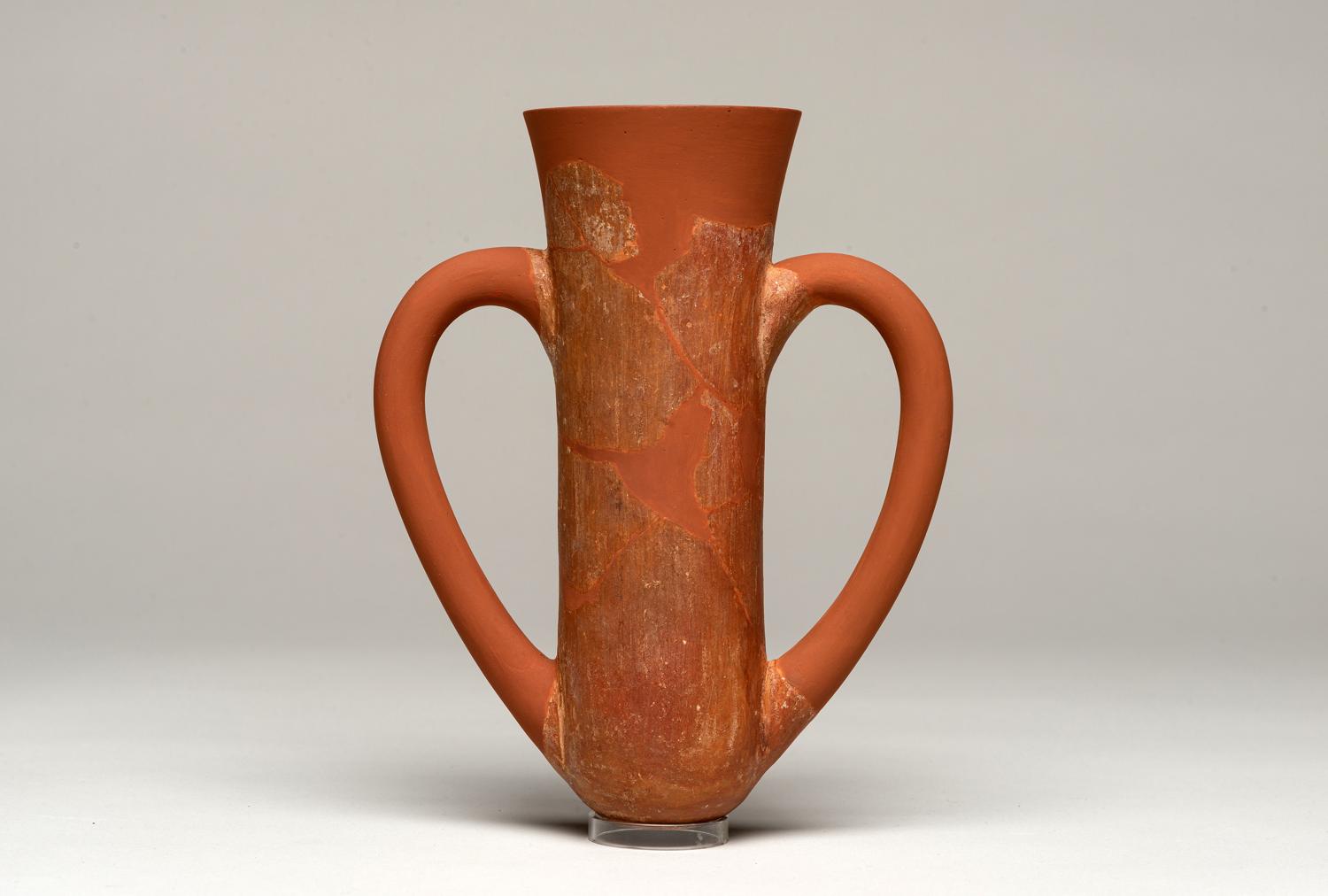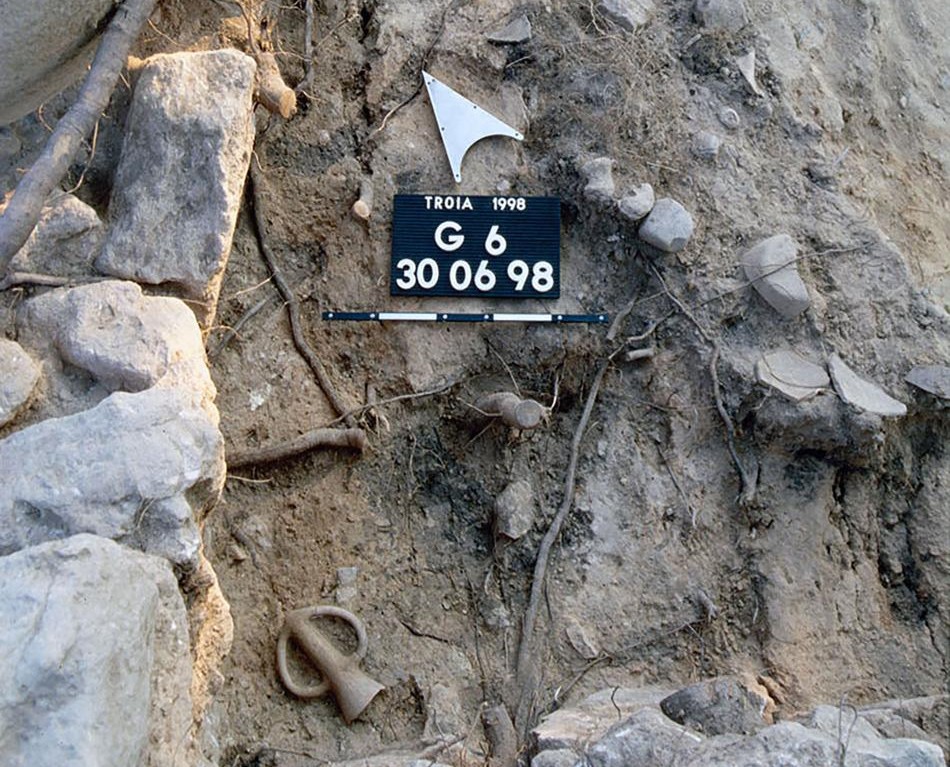
“Hephaestus spoke, then stood up, passed a double goblet across to his dear mother,” says the first book of the Iliad, recounting how the god of fire, metalworking and volcanoes encourages his mother. “As he spoke, the white-armed goddess Hera smiled. She reached for her son’s goblet. He poured the drink, going from right to left, for all the other gods, drawing off sweet nectar from the mixing bowl.”
This drinking vessel, a depas goblet (depas amphikypellon), is well-known to archaeologists: it is a twelve to forty centimeter high, slender clay drinking vessel with two handles, narrowing to a pointed base. Over one hundred such goblets have been found to date in Troy alone covering the period of 2500 to 2000 BCE. They are also scattered across the Aegean to Asia Minor and Mesopotamia, and can hold 0.25 to 1 liter.
Heinrich Schliemann already conjectured that the depas goblet was passed around at celebrations – just as described in the Iliad,” says Dr. Stephan Blum from the Institute of Prehistory, Early History and Medieval Archaeology at the University of Tübingen, and co-author of the study.
Wine was drunk from the depas goblets
The classical archaeology collection of the University of Tübingen holds a depas goblet and two fragments from Schliemann’s trove. Maxime Rageot, from the University of Bonn, milled a two gram sample from the two fragments. Then he heated the samples to 380 degrees centigrade and studied the resulting mixture using gas chromatography (GC) and mass spectronomy (GC-MS).
The evidence of succinic and pyruvic acids was conclusive: they only occur when grape juice ferments. So now we can state with confidence that wine was actually drunk from the depas goblets and not just grape juice,” says Maxime Rageot.

Wine was the most expensive drink in the Bronze Age and a depas goblet was the most precious vessel. Depas goblets have been found in temple and palace complexes. So, scientists had deduced that wine drinking took place on special occasions in elite circles. However, did people from the lower classes in Troy also drink wine as an everyday food and luxury?
We’ve also chemical studied ordinary cups that were found in the outer settlement of Troy and therefore outside the citadel. These vessels also contained wine! So it is clear that wine was an everyday drink for the common people too”, says Stephan Blum from the University of Tübingen.
The excavations at Troy (Turkish: Hisarlık) were headed by the University of Tübingen from 1987 to 2012. Currently, the excavation results are being evaluated and further analyses carried out on the material findings. “Research into Troy has a long tradition at the University of Tübingen, and I am delighted that we have been able to add another piece to the puzzle revealing the picture of Troy,” says Professor Dr. Dr. h.c. (Dōshisha) Karla Pollmann, President of the University of Tübingen.
Latest Highlights:
SU researchers keep monitoring glaciers as UN puts a spotlight on the need to preserve them
UNIL PhD students benefit from short-term research mobilities within CIVIS
Interactive tools foster participation and motivation in university students
Renewed Olympic certification for the Salzburg's Sports Centre
